One of my photography surprises is the ability to enlarge an image and discover something I’ve never seen. This happened when I looked at a close-up of the frontal plate on the forehead of a Gray-headed Swamphen and saw a swollen outer edge. Other photos showed flat frontal plates on this species. How swell is that!

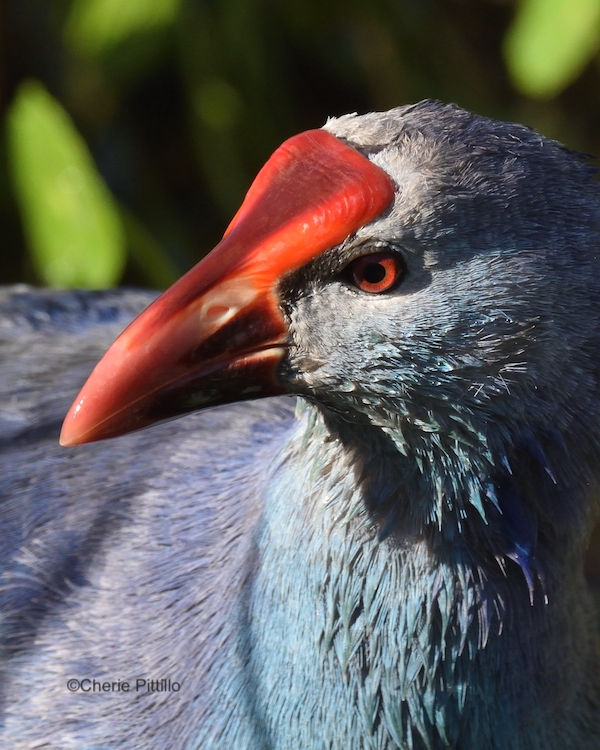
Evidently this is not a well-known observation among my many birding friends. That gave me the idea to research this topic. Nor does it seem to be well-studied in the science community. I found references in 1903, 1942, and mainly 1950-52. However, the frontal plate is often used in bird guides as a bird identification tool. Juveniles lack that well-developed coloration and size. I’ll include some young of certain species that I actually have. Also one study suggests blue colored shields may reflect light or possibly blend in with a watery environment for protection.
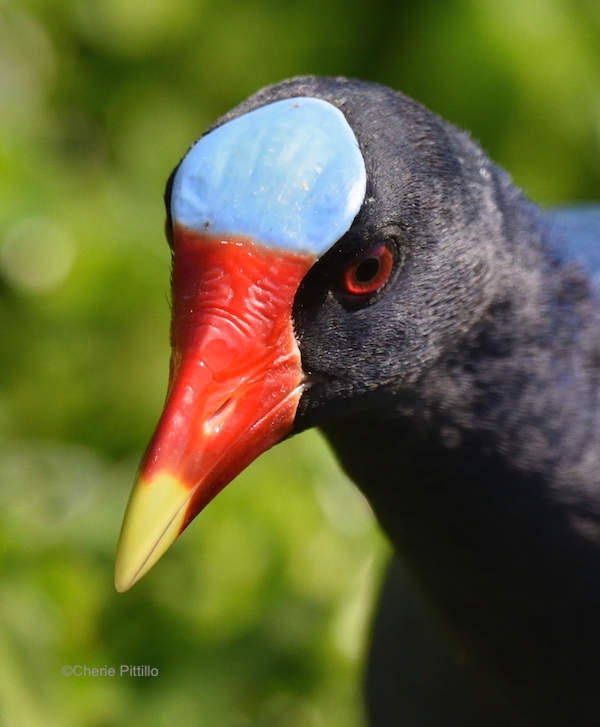
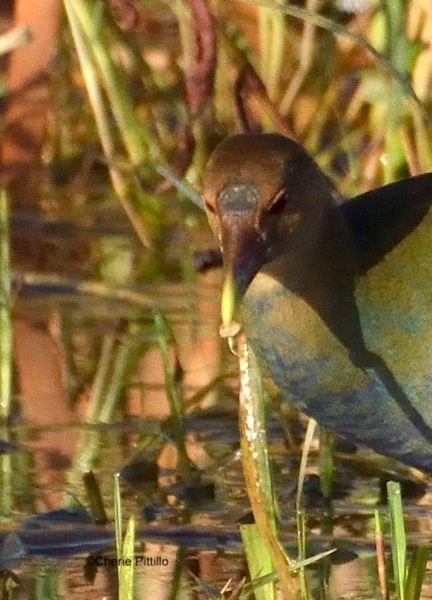
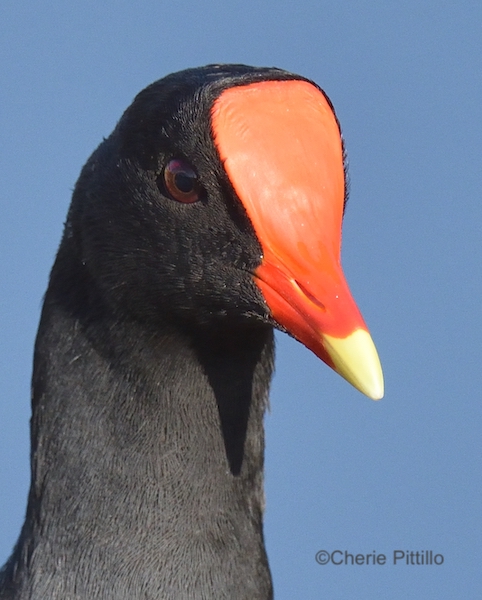
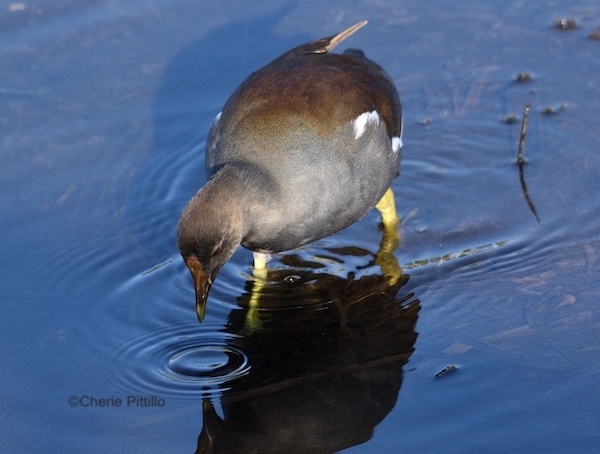
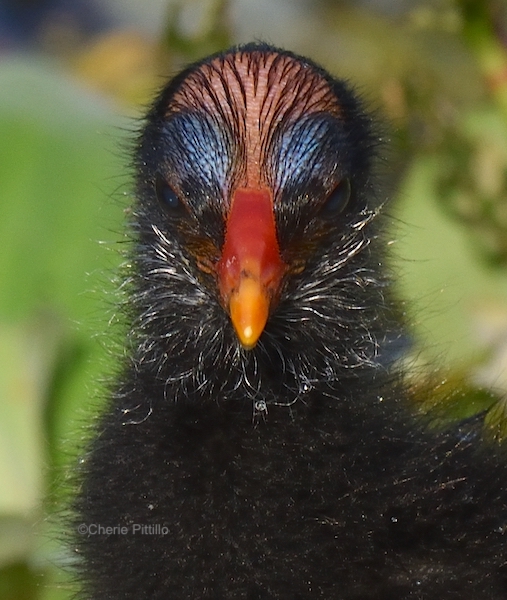
A frontal plate is also called a frontal shield or a facial plate/facial shield which may consist of two parts, the callus and the culmen. The fleshy outer portion or callus is at the forehead of certain birds down to the upper bill. The inner portion, the culmen, is the central part of the plate which extends down onto the bill but doesn’t swell. However, in some species only the callus appears without a distinct culmen. At least that’s the way the small fleshy protrusion appears in the adult American Coot. Also, some species can erect dark feathers around the plate to add contrast.
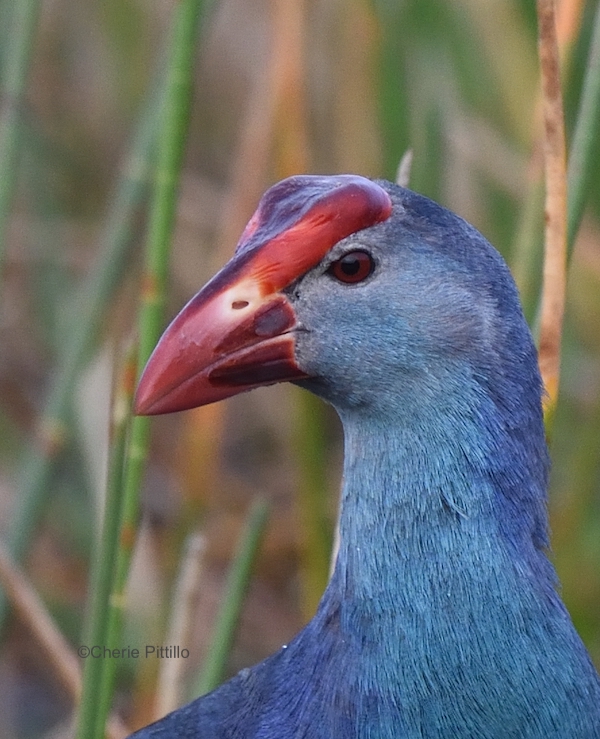
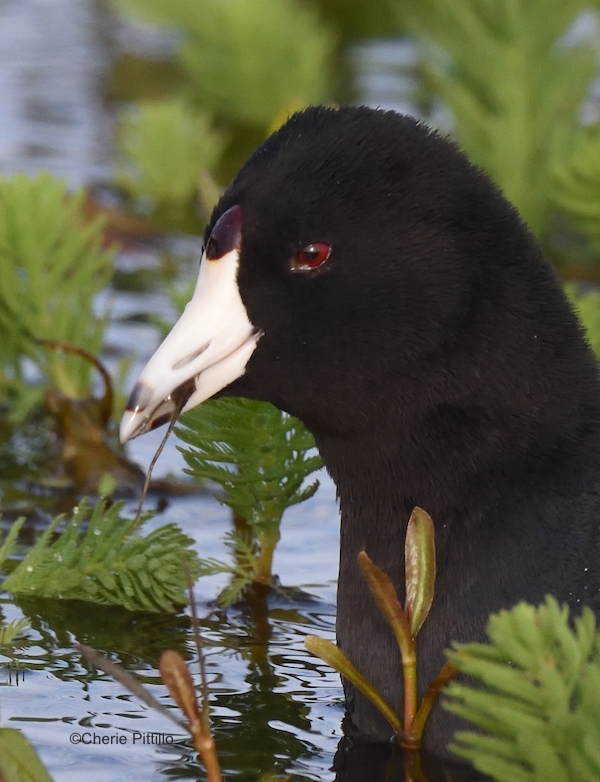

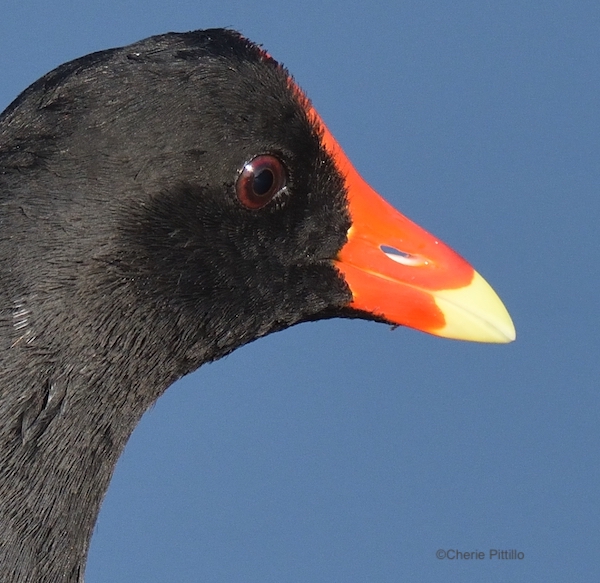
Certain members of the rail family including American Coot, Common Gallinule, Purple Gallinule, and Gray-headed Swamphen have frontal plates. Also, members of the jacana family sport them too such as the Northern Jacana with a three-lobed yellow shield and the Wattled Jacana with a red shield. On the Wattled Jacana, it looks like someone was overzealous with bubble gum as the red shield is bi-lobed complete with the addition of rictal lappets. What are rictal lappets? The rictum is the opening of a birds mouth or gape. Folds of skin on either side are called lappets. Let’s lap up a couple of jacana photos.
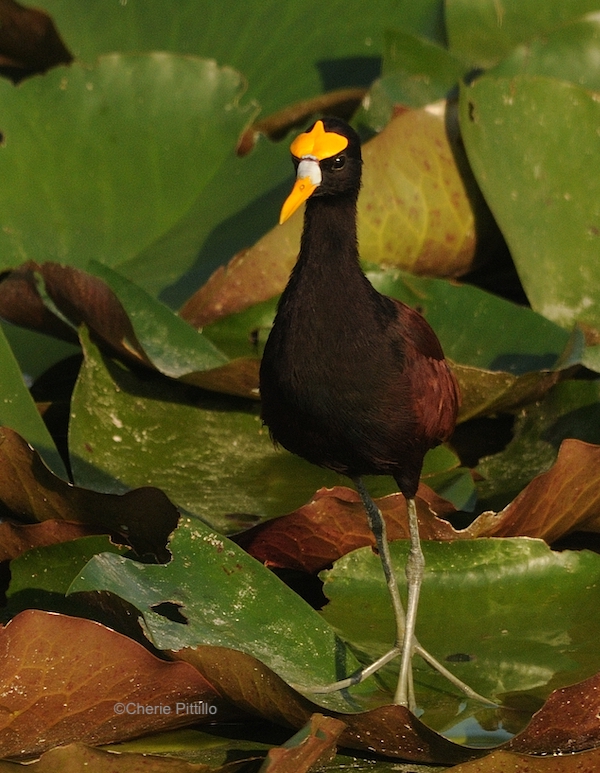

Due to limited research studies, I will summarize some general statements about frontal plates and their role in territorial defense:
Since aggression is associated with testosterone levels, frontal shields of both sexes are larger, thicker and more colorful during courtship and breeding season than in juveniles or non-breeding adults. They also relate to winning in territorial defense, breeding, mate selection, and sexual behavior. Even mates may fight until they recognize the size and shape of each other’s facial shield! It may help determine the capability of a competitor as well as an indicator of health. And last in my research review, the secretions that control shield growth and territorial behaviors appear to be involved in migration.
In other words, the frontal plate is like wearing a mood ring at your forehead!
LET YOUR HEART SWELL WITH HAPPINESS IN NATURE!
SPECIES LIST
USA:
Purple Gallinule, Porphyrio martinica, Gallineta Morada (Spanish)
Common Gallinule, Gallinula galeata, Gallineta Frente Roja (Spanish)
American Coot, Fulica americana, Gallareta Americana (Spanish)
Gray-headed Swamphen, Porphyrin poliocephalus
Northern Jacana (juvenile vagrants in Texas and Arizona) Jacana spinosa, Jacana Norteña (Spanish),
Yucatán Peninsula: Purple Gallinule, Common Gallinule, American Coot, Northern Jacana,
South America: Wattled Jacana, Jacana jacana
DISCLAIMER: References do not agree or may have not updated recent information.
Sal a Pajarear Yucatán(Guía de Aves); Birds and Reserves of the Yucatán Peninsula. A Guide to Birds of Mexico and Northern Central America ,The Sibley Guide to Bird Life and Behavior
https://sora.unm.edu/sites/default/files/journals/wilson/v064n02/p0083-p0097.pdf.
https://sora.unm.edu/sites/default/files/journals/wilson/v063n03/p0157-p0166.pdf
https://www.tandfonline.com/doi/abs/10.1080/08927014.2005.9522603
https://birdsoftheworld.org/bow/species/norjac/cur/appearance
https://birdsoftheworld.org/bow/species/purgal2/cur/appearance
https://birdsoftheworld.org/bow/species/comgal1/cur/appearance
https://birdsoftheworld.org/bow/species/purswa3/cur/appearance
Cherie Pittillo, a “nature inspired,” photographer and author, explores nature everywhere she goes. She’s identified 56 bird species in her Merida, Yucatan backyard view. Her monthly column features anecdotes about birding in Merida, Yucatan and also wildlife beyond the Yucatan.
Contact: [email protected] All rights reserved, ©Cherie Pittillo


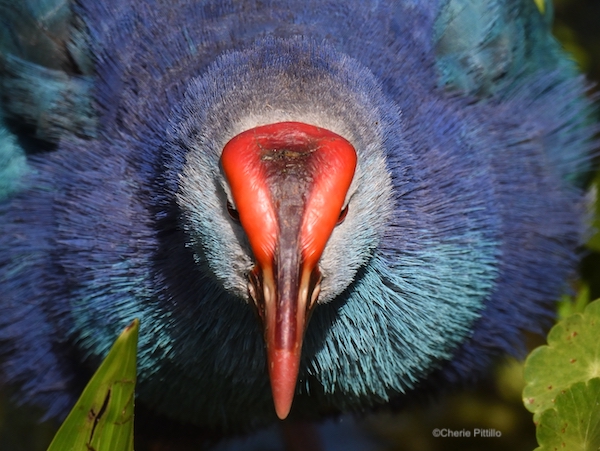

3 comments
Once again, fantastic photos. Very interesting topic that I hadn’t thought much about before although I always used the frontal plates for ID purposes. Thanks!
Thanks, Bruce Krucke, for reinforcing my comments about IDs. I don’t know when I would have ever noticed if I hadn’t taken photographs to see the enlargement.
Thank you, Bruce, for reinforcing my comments about ID usage. I don’t think I would have ever noticed this until I enlarged my photograph. And then to realize how understudied it’s been even though it has many uses!